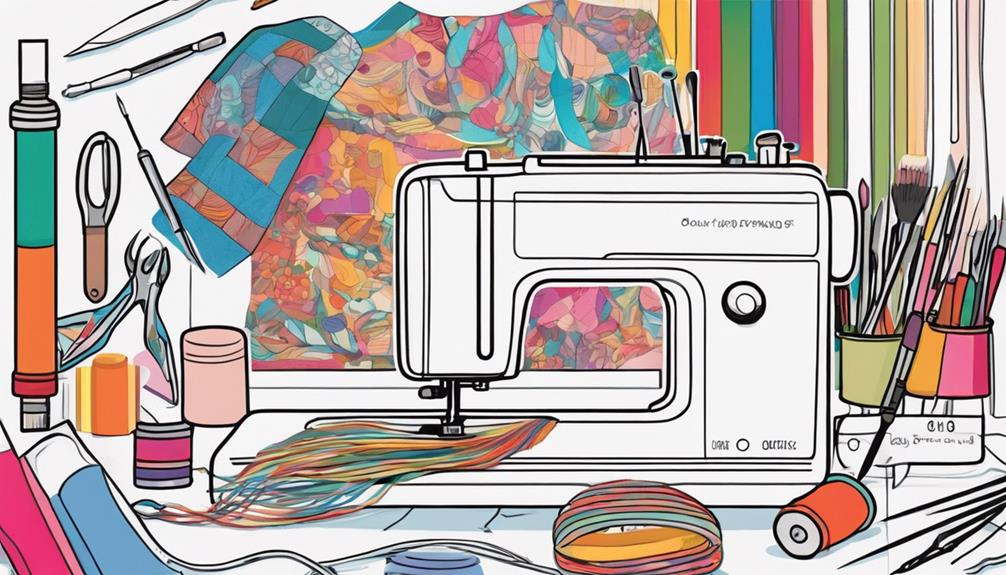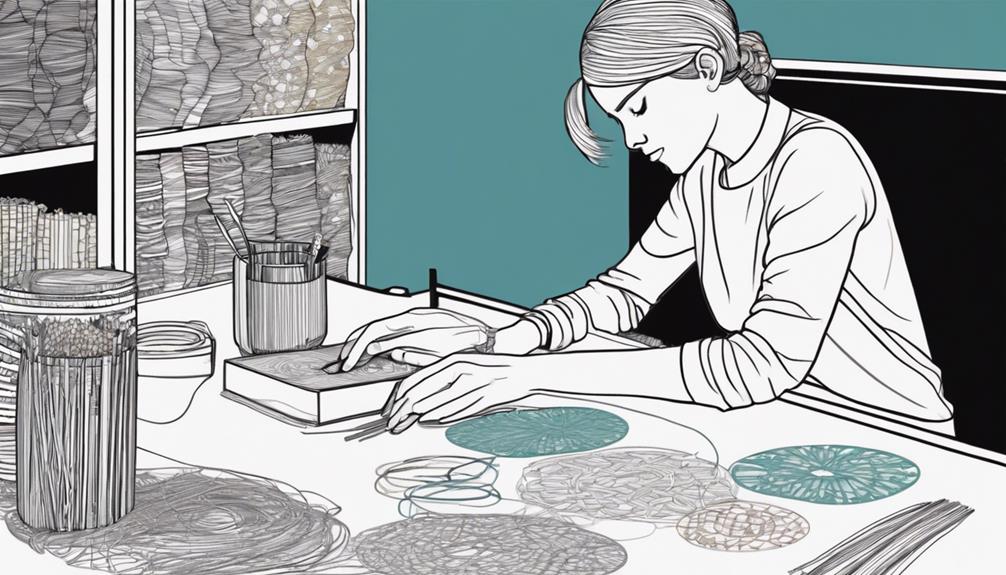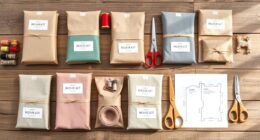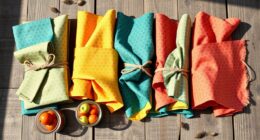Embark on a journey into the mesmerizing world of textile arts! Explore fabric manipulation, weaving, dyeing, and stitching to create detailed pieces of artwork. Discover the variety of materials used by artists, from cotton and silk to synthetic fibers. Unravel the mysteries of producing vibrant colors through dyeing and embellishments like applique. Delve further into techniques such as spinning, weaving, and knitting to bring your creative visions to fruition. Allow your imagination to soar by honing these essential skills and unlocking a realm of artistic possibilities that await you.
Key Takeaways
- Fabric manipulation, coloring, and embellishment are essential.
- Mastery of stitches and design principles for intricate patterns.
- Weaving, dyeing, and applique are common techniques.
- Transform fibers into yarn and fabric through spinning and weaving.
- Modern techniques like bonding and embroidery enhance textile production.
Textile Arts Basics
Start by exploring the basic techniques and principles that form the foundation of textile arts in this extensive guide.
Textile arts basics involve a range of skills and elements essential to creating stunning pieces. Understanding fabric manipulation, coloring, and embellishment is essential in textile art. Artists utilize various materials like cotton, silk, wool, and synthetic fibers to bring their visions to life.
Mastery of different stitches and design principles is necessary for crafting intricate patterns and textures in textile art. Weaving is a fundamental technique where threads are intertwined to form fabric, while dyeing allows artists to add vibrant colors to their creations. Applique, the process of attaching one piece of fabric onto another, is often used for decorative purposes.
Textile Manufacturing Processes
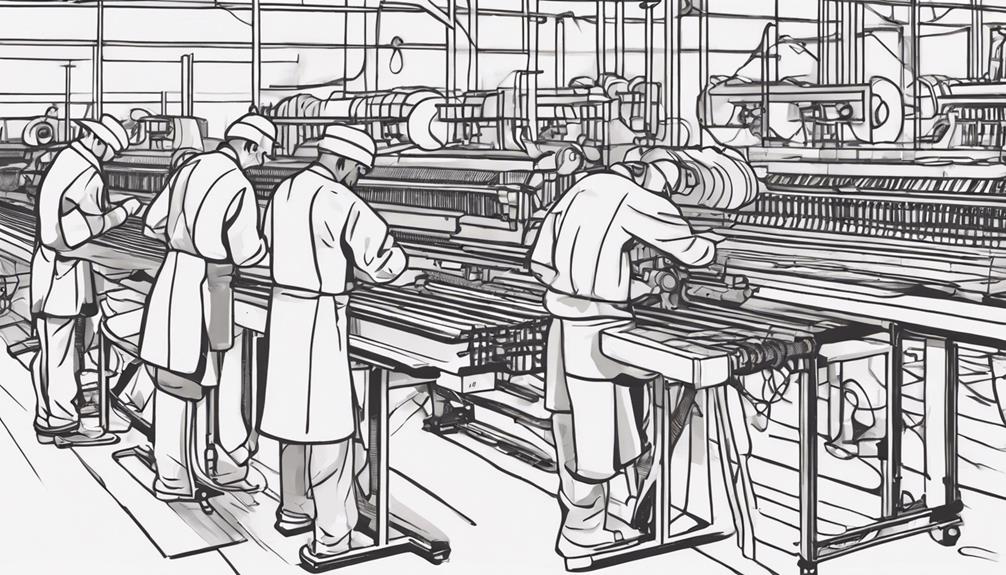
Textile manufacturing processes involve transforming fibers into yarn and fabric through techniques like spinning, weaving, dyeing, and knitting. Fibers, the raw materials for textiles, can be natural, including cotton, linen, wool, and silk, or synthetic like polyester, rayon, and nylon. The quality of these fibers greatly influences the final product's durability, texture, and appearance.
Modern textile manufacturing prioritizes profitability, productivity, and quality by leveraging advanced technologies and efficient production techniques. Companies continually refine their production methods to meet consumer demands and industry standards. Evolution in production techniques has introduced innovative methods such as bonding, embroidery, and specialized fabric production, catering to diverse textile applications.
Whether it's the intricate process of spinning fibers into yarn or the artistry of dyeing and weaving fabrics, each step in textile manufacturing plays an essential role in creating the textiles we use in our daily lives.
Types of Textile Production Techniques
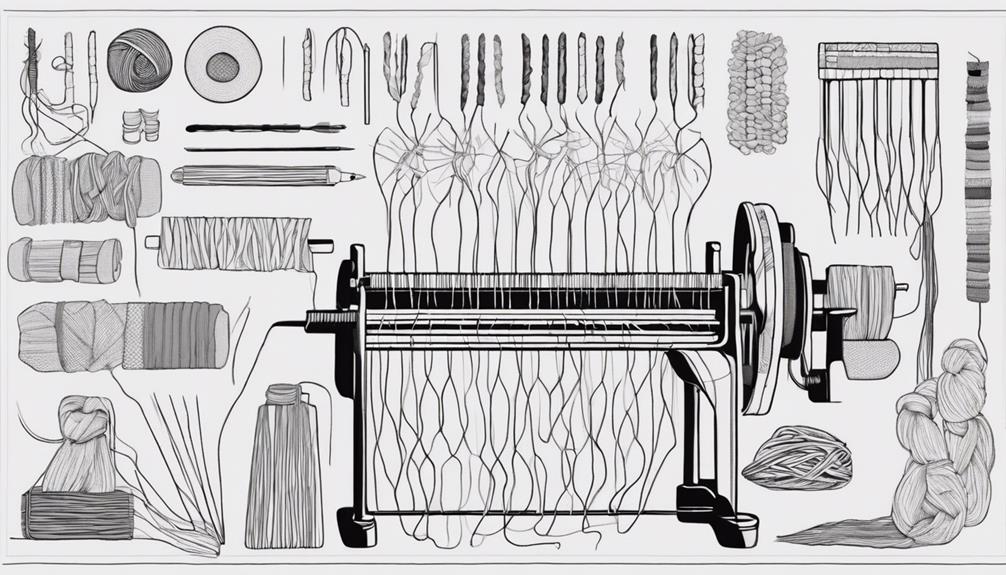
Spinning, weaving, dyeing, and knitting are fundamental textile production techniques that play a critical role in creating a diverse range of fabrics. These methods form the backbone of textile arts production, allowing for the crafting of various textiles.
In addition to these primary techniques, bonding and embroidery are also commonly used in the creation of specialized fabrics like tapestries, felt, and bark cloth. The textile industry is a blend of handmade textiles such as brocades and velvets, alongside factory-produced fabrics.
Materials used in textile production span across categories including animal, plant, mineral, and synthetic textiles, each contributing unique properties to the final product. Over time, the evolution of textile production processes has led to a wide array of techniques being employed to cater to the demand for different types of fabrics.
From traditional handmade methods to modern industrial processes, textile production continues to thrive through the application of these varied techniques.
Innovative Strategies in Textile Manufacturing

Efficient raw material sourcing and processing are vital in driving innovative strategies within textile manufacturing. Optimum yarn manufacturing processes play a pivotal role in ensuring high-quality outputs in the industry.
By implementing modern technologies, textile manufacturers can streamline their production processes, resulting in increased efficiency and improved product quality. Additionally, focusing on advanced finishing processes can elevate the overall appeal and market competitiveness of textiles.
To stay ahead in the constantly evolving textile industry, it's essential to stay informed about the latest industry trends and innovations. By being proactive and adapting to new techniques and technologies, manufacturers can maintain a competitive edge and meet the demands of the market.
Embracing innovative strategies not only enhances productivity but also enables manufacturers to deliver high-quality textiles that stand out in the industry. By combining efficient processes with cutting-edge technologies, textile manufacturers can set themselves apart and thrive in the competitive market landscape.
Exploring Textile Arts Content

Uncover an extensive array of textile arts content in 'The Ultimate Guide on Textile Arts', offering insights into various creative techniques and styles. This all-encompassing book explores the world of textile art, covering wet felting, pin weaving, dyeing, embroidery, and applique techniques. With clear instructions and color photos, this guide caters to both beginners and intermediate learners seeking to broaden their artistic horizons.
Some readers find the techniques fundamental, yet many appreciate the wide range of techniques presented.
Furthermore, the book includes galleries showcasing artsy works, providing inspiration and examples for readers to explore. However, some readers note that these works might appear somewhat outdated and feel somewhat disconnected from the instructional content.
Nonetheless, the Ultimate Guide to Manipulating textile art techniques offers a valuable resource for those looking to enhance their skills and create beautiful, handcrafted pieces. Whether you're a novice or a seasoned textile artist, this guide is sure to ignite your creativity and passion for the art form.
Frequently Asked Questions
How to Make a Textile Artwork?
So, you wanna make a textile artwork, huh?
Well, first, pick the perfect fabric like 260gm white cotton canvas.
Grab some fabric paints that stick to natural fibers for those vibrant designs.
Don't forget the fabric medium for added flexibility and texture.
Wet the fabric before painting to make your life easier.
And hey, layer some lighter-weight fabrics for extra depth.
Now go get creative!
How Are Textiles Made Step by Step?
To make textiles step by step, you start by spinning fibers into yarn, then weaving the yarn into fabric. Next, you might dye or print the fabric and finish it for use.
Raw materials like cotton, wool, silk, and synthetic fibers are sourced and processed. Techniques such as knitting, felting, embroidery, and applique can be used to manipulate and embellish the textiles.
Specialized machinery is used for spinning, weaving, dyeing, and finishing processes. Quality control is essential throughout production.
What Is the Technique in Creating Textile Art?
When creating textile art, you weave together a tapestry of creativity using techniques like wet felting, pin weaving, dyeing, embroidery, and applique.
By manipulating fabrics through dyeing, painting, stitching, and embellishing, you bring your unique vision to life.
Experimenting with fabric paints, layering fabrics, and softening them with water before painting can enhance the depth and flexibility of your textile creations.
Let your artistic spirit guide you through the threads of imagination.
What Are the Basics of Textile Art?
To create textile art, you should start with the basics. Learn techniques like sewing, dyeing, quilting, weaving, and embroidery.
Experiment with different fabrics such as cotton, silk, wool, and synthetic fibers. Express your creativity through fabric manipulation, surface design, and mixed media approaches.
These fundamental skills will help you explore various artistic possibilities and enhance your abilities in textile art.
Conclusion
To sum up, understanding how textile arts are made is like unwinding a vibrant tapestry of creativity and innovation. From the fundamentals of textile production to the state-of-the-art methods being utilized today, the world of textile arts is a captivating domain of potential.
So feel free to delve into and discover this lively world of fabric and thread – you'll be astonished at the detailed beauty that can be crafted with just a few basic materials and a lot of creativity.




